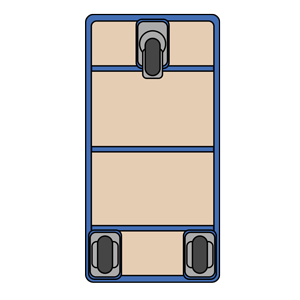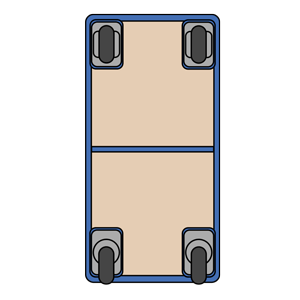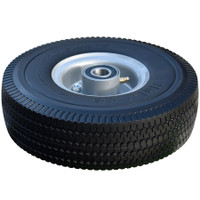12th Feb 2024
What Wheel and Castor Configurations Should I Use On My Trolley?
Choosing how your castors are set up is integral to the safe efficient movement of your goods. There is no right or wrong, however there is preference depending on the user and the working environment. Almost all of our made to order products can be set up to optimise your castor configuration, however it is always best to discuss these options with your account manager which will best suit your needs.
This simple guide is designed to help you understand the different options of wheel configurations available along with their different uses.
What Wheel And Castor Configurations Can I Get For My Trolley?
There are a variety of wheel configurations available for all kinds of trolleys, they include:
- 3 Wheel Configuration
- 2 Fixed, 2 Swivel Configuration
- 4 Swivel Configuration
- Diamond Wheel Configuration, 2 Fixed and 2 Swivel
- 4 Swivel 2 Fixed Castor Balance Configuration
These configurations are great for a range of applications, and we shall go into more detail below.
What Is 3 Wheel Configuration?

Three wheeled trolleys are great for certain applications. Set up with 2 fixed castors at the rear and one swivel at the front, the handle is used as a leverage point to swing the front end of the trolley to the desired direction. Generally we would only recommend this style of configuration if the load is light (no more than 200kg) and the trolley length is short (no more than 1000mm). Doing this ensures there is not too much stress on the upper body of the operator, and the trolley will be an easy to use and nimble piece of equipment.
What Is 2 Fixed, 2 Swivel Castors Configuration?

This configuration is the easiest to control and is our preferred standard set up, often with the added benefit of brakes. 2 fixed castors are mounted at the front of the trolley, with 2 swivel castors mounted at the rear handle-end of the trolley. The trolley pivots on the axis of its front wheels and is still easy to control when loaded, as the fixed castors at the front always maintain the direction that they are pointing in. little effort is required from the operator to move the handle left and right to adjust the direction. It is a common misconception that swivel wheels should be on the front of the trolley and is supplied frequently on cheap imported product, however this means that to achieve the correct direction you need to use the handle as a lever point to force the front end to the required direction. This additional effort has consequences to the longevity of the handle, but moreover causes massive stresses on the shoulder muscles of the operator. This strain is multiplied tenfold when a heavy load is applied.
What Is 4 Swivel Castors Configuration?

4 Swivel castors on your trolley when carrying lighter loads and in environments where space is restricted can be the ideal castor set up. Light, nimble, and very manoeuvrable, with the ability to spin on its own axis while being able to crab crawl, this configuration can be extremely useful in certain circumstances. That being said, one of the most common observations is of a classic supermarket trolley. While easy to move at the start, as you add more and more weight to the trolley it loses its ease of use, and by the time you need to get to the till with a full load you will often find the trolley fighting against you. All the additional weight in the trolley makes the swivel castors fight against each other creating a nightmare for the operator. this configuration may excel for lighter loads in certain situations, but for moving serious weight it is always recommended that you use a trolley with some fixed-directional wheels.
What Is Diamond Wheel Configuration, 2 Fixed and 2 Swivel?

This diamond balance configuration work is a similar method as the standard 2 fixed and 2 swivel with brake configuration, with the fixed castors helping the user maintain directional control with little effort. As well as this, the centrally mounted castors mean that the turning radius is less, using the central castors as the pivot point reducing your turning arc. The outer castors can also be raised off the ground slightly further reducing the effort needed to turn the trolley. Its also important to note however that this extra clearance will reduce the capacity of the trolley, as the trolley will often only be on two wheels when turning. This can be counteracted by up-rating the quality and capacity of the wheels. As with the other diamond configuration, this configuration has reduced stability, and unlike the 4 swivel castor option, you cannot crab craw.
What Is 4 Swivel 2 Fixed Castor Balance Configuration?

With all the tight manoeuvring you would get from a standard diamond configuration but with the capacity of a standard 4 wheel configuration, the six wheel configuration also loses the diamond wheel configurations instability issues thanks to the four corner mounted castors. It would seem that this answers every scenario, but unfortunately this is not always the case. Due to the fixed castors the trolley loses the ability to crab crawl, and this layout can also cause issues, on uneven ground, particularly on serious inclines, declines, and cambers.
